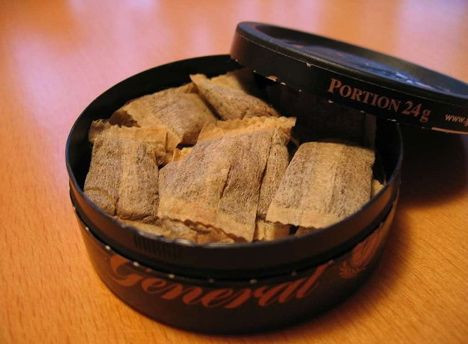Smokeless Tobacco Isn't A Magic Bullet For Quitting Cigarettes: Teens Often Smoke AND Chew

Smokeless tobacco products have often been promoted to youth as healthier alternatives to cigarettes because they have lower levels of the carcinogenic tobacco-specific nitrosamines. But a new study has found that instead of dropping one habit for the other, about one in 20 middle and high school students are using both cigarettes and smokeless tobacco.
"These findings are generally at odds with the recent positions in favor of novel smokeless tobacco products as a means of harm reduction," the researchers wrote.
Youth in grades 6-12 could be cancelling out any of the healthier benefits of smokeless tobacco by using it on top of cigarettes, the researchers said, adding that they could even be increasing their risk for tobacco-related illnesses, Everyday Health reported.
Read More: Smokeless Tobacco Use Remains The Same Among America's Youth
Researchers from the Harvard School of Public Health looked at data from the 2011 National Youth Tobacco Survey. The survey included information about the smoking habits and use of various types of tobacco products for over 18,000 students during the previous 30 days.
Of the respondents, 5.6 percent reported using smokeless tobacco products. These included traditional "chaw" (chewing tobacco), snuff, dissolvable tobacco, and the newest addition, snus, which is a moist, pasteurized snuff. Of these students, 72.1 percent of them said they used conventional products as well, including cigarettes, cigars, and water pipes.
What was even more troubling is that only 34.2 percent of these students planned on quitting, compared to 57.7 percent of those who just used smokeless tobacco.
The majority of those who used smokeless tobacco also cited a friend who used, or peer-pressure, as their reason for using it as well — this factor resulted in almost a 10-fold higher risk of a student starting to use smokeless tobacco.
"Promotion of snus or dissolvable tobacco products at a population level may not have benefits and might even cause harm from dual use with combustible and/or conventional smokeless tobacco products," the researchers wrote.
Read More: Why Are So Many Smokers Still Smoking?
According to the American Cancer Society, nearly nine out of 10 smokers begin smoking by the time they turn 18. In 2011, 19 percent of high school girls and 28 percent of high school boys used some form of tobacco at least once within the 30 days before they were surveyed. About 12.5 percent of high school boys and more than two percent of high school girls use some type of smokeless tobacco.
The researchers are hoping this evidence leads to more effective warning labels on smokeless tobacco, Strangely, there was actually a higher likelihood of use among those who had remembered seeing labels on smokeless tobacco, suggesting the labels as they are are entirely ineffective. They study authors also urged pediatricians to be more forthcoming with their patients.
"Clinicians, when they are engaging an adolescent patient shouldn't only ask 'Do you smoke cigarettes?,' but also 'Do you use any form of tobacco, including smokeless?,'" Dr. Constantine I. Vardavas, of the Center for Global Tobacco Control and coauthor of the study, told MedPage Today. "It's important that a clinician convey the message that all tobacco products are harmful."
Source: Agaku I, Varvadas C, Connolly G, et al. Use of Conventional and Novel Smokeless Tobacco Products Among US Adolescents. Pediatrics. 2013.



























